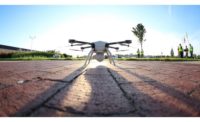While metal has always played a crucial role in construction, entire buildings made of this material seem an unconventional choice. Despite these preconceptions, metal building designs have grown increasingly popular.
These projects aren’t just warehouses and industrial facilities, but office spaces, homes and businesses. Like many trends, this shift is more than a fashionable design choice. It’s the product of several growing motivators that have pushed architects and construction companies in this direction.
Here’s a closer look at why metal building designs are becoming more commonplace and how companies can take advantage of the trend.
Material Affordability and Accessibility
One of the most significant drivers behind metal building designs’ popularity is their cost. Supply chain disruptions and capacity restrictions within the past couple of years have raised the price of many standard construction materials. Metal has remained relatively affordable, making it a more attractive option.
Lumber prices soared by more than 300% between April 2020 and May 2021 to $1,600 per thousand board feet. Steel prices also saw a tremendous increase at 215%, but it was comparatively smaller, with median prices ranging from $500 to $800.
Metal also has the advantage of being more accessible to many firms. While the U.S. imports more than 10 times as much lumber as it exports, steel is a largely domestic industry. As a result, these materials don’t face as many supply chain and availability issues.
Workability
Metal is also an easy material to work with. This advantage has grown increasingly hard to overlook as the construction industry’s backlog has ballooned. The sector already had a reputation for falling behind schedule, and increasing housing demands and shutdowns amid the pandemic added to this backlog.
Choosing a more easily workable material helps construction teams complete projects faster, meeting surging demand. Growing labor shortages have made that even more important. With 300,000-400,000 open positions each month, construction teams need every advantage they can get to save time.
This workability also makes construction projects more affordable, as it requires fewer hours and brings less disruptions. All these benefits make it a natural choice for the current state of the industry.
Easy Ongoing Maintenance
Similarly, metal’s workability and affordability make it ideal for ongoing improvements, additions or maintenance. With materials like wood and concrete, adding a room or window or installing new utility infrastructure can be a long, costly process. Renovations are easier with metal building designs, adding value for the property owner and saving renovation workers time.
These ongoing concerns have become more important lately as building owners’ needs have shifted. For example, a new air conditioning system can reduce cooling costs by 20%, and many homeowners and businesses are looking to reduce ongoing expenses. Getting into a metal building to install these new systems would be easier and cheaper than other materials, making the most of that cost reduction.
Creating easily adaptable buildings can also help construction companies mitigate extensive backlogs in the future. They may not fall behind schedule as easily if they can easily add to or adapt projects instead of starting new ones.
Strength and Resilience
One of metal’s most recognizable characteristics is that it’s strong and durable, which has become increasingly important. Steel is more resistant to fires than wood, holds up better in the cold than concrete and withstands earthquakes with less volume than other materials. As the market grows more aware of the growing threat of climate change, those advantages become more prevalent.
Natural disasters are three times as frequent today as they were just 50 years ago. Mitigating climate change is a slow, long-term process, and construction companies will have to account for that trend. The strength and resilience of metal building designs are hard to overlook in the face of these risks.
Longevity also delivers more value to the property owner. If construction firms can help homeowners and businesses reduce long-term costs, they may see more demand.
Sustainability
Metal building designs can also be more sustainable than other options. Concrete production accounts for 8% of all global emissions, thanks to high energy demands and CO2-producing processes. Wood requires less energy to harvest, but can lead to deforestation and is largely a single-use, less durable material.
By contrast, construction teams can recycle all steel scraps left over from a project and use 100% recycled steel during construction. It’s just as strong and durable as new metal, making this an entirely viable solution. Since it lasts longer, it also comes with lower demand for ongoing production, reducing related energy costs.
Consumers and businesses are becoming more environmentally minded and will look for sustainable construction partners. These benefits will then become a helpful marketing tool on top of helping construction firms protect the environment.
Prefabrication and Modular Construction
Another trend that metal building design lends itself to is prefabrication and modular construction. Thanks to their durability and low volume-to-strength ratio, metal structures are easier to transport than other designs. Consequently, they’re a natural fit for prefabricated modular designs, which are growing in popularity.
In 2019, permanent modular construction projects added more than $9 billion to the overall construction industry, a figure that’s slowly risen in recent years. Considering how modular construction is typically 30%-50% faster than traditional methods, it will likely keep growing. Pandemic-era budget cuts and backlogs could accelerate that trend.
As modular construction and other forms of prefabrication grow, so too will metal building designs. In the next few years, this trend could see exponential growth.
Metal Building Design Presents Many Advantages
Metal building designs hold many benefits over others in any context. Current market conditions and trends have made them all the more advantageous, leading to broader adoption of these buildings. As these trends continue, designs will likewise become increasingly popular.
The construction industry faces several imposing challenges today, but metal buildings present potential solutions to many of them. In light of these obstacles and metal designs’ benefits, it should come as no surprise that these configurations are in high demand.

.jpg?height=200&t=1682515164&width=200)

.jpg?height=200&t=1708013838&width=200)